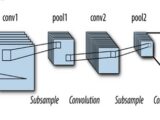Understanding Underfitting and Overfitting in Machine Learning
May 4, 2024In the realm of machine learning, achieving a balance between underfitting and overfitting is crucial for building models that generalize well to unseen data. These two phenomena represent opposite ends of a spectrum, each posing unique challenges to the performance and reliability of predictive models. In this article, we delve into the concepts of underfitting and overfitting, and explore their causes, consequences, and strategies to mitigate them.
Underfitting:
Underfitting occurs when a model is too simplistic to capture the underlying patterns in the data. Essentially, the model fails to learn from the training data and performs poorly not only on the training set but also on unseen data. This often happens when the model lacks the complexity to represent the underlying structure of the data. In simpler terms, the model is too generalized to make accurate predictions.
Causes of Underfitting:
Model Complexity: When the chosen model is too simple relative to the complexity of the underlying data, underfitting can occur. For instance, attempting to fit a linear model to a dataset with nonlinear relationships may lead to underfitting.
Insufficient Training: If the model is not trained for a sufficient number of iterations or epochs, it may not have the opportunity to capture the underlying patterns in the data.
Feature Selection: Inadequate or irrelevant features can hinder the model’s ability to learn the underlying patterns in the data, leading to underfitting.
Consequences of Underfitting:
Poor Performance: Underfit models exhibit poor performance not only on the training data but also on unseen data, leading to inaccurate predictions.
Inability to Generalize: Since underfit models fail to capture the underlying patterns in the data, they are unable to generalize well to new, unseen instances.
Missed Opportunities: Underfitting can result in missed opportunities to extract valuable insights and make informed decisions from the data.
Overfitting:
Contrary to underfitting, overfitting occurs when a model learns the training data too well, capturing noise and irrelevant patterns that do not generalize to unseen data. In essence, the model memorizes the training data instead of learning the underlying relationships, leading to poor performance on new data.
Causes of Overfitting:
Model Complexity: Overly complex models, such as deep neural networks with a large number of parameters, are more prone to overfitting, as they have the capacity to memorize noise in the training data.
Limited Data: When the training dataset is small, there is a higher risk of overfitting, as the model may memorize the noise present in the limited samples rather than learning the true underlying patterns.
Lack of Regularization: Without proper regularization techniques such as dropout, L1/L2 regularization, or early stopping, models are more susceptible to overfitting by allowing them to fit the training data too closely.
Consequences of Overfitting:
Poor Generalization: Overfit models perform well on the training data but fail to generalize to new, unseen data, resulting in poor performance in real-world scenarios.
Sensitivity to Noise: Overfit models tend to capture noise and irrelevant patterns present in the training data, making them less robust and more sensitive to fluctuations.
Reduced Interpretability: The presence of noise and irrelevant patterns in overfit models can make it challenging to interpret the learned parameters and extract meaningful insights from the model.
Mitigating Underfitting and Overfitting:
Model Selection: Choose a model of appropriate complexity that can effectively capture the underlying patterns in the data without being too simplistic or overly complex.
Cross-Validation: Employ techniques such as k-fold cross-validation to assess the generalization performance of the model and detect signs of underfitting or overfitting.
Regularization: Apply regularization techniques such as L1/L2 regularization, dropout, and early stopping to prevent overfitting by penalizing overly complex models.
Feature Engineering: Carefully select and engineer relevant features to provide the model with meaningful information while avoiding irrelevant or redundant features.
Data Augmentation: Increase the size and diversity of the training dataset through techniques such as data augmentation to mitigate overfitting, especially when working with limited data.
Conclusion:
In summary, underfitting and overfitting represent two common challenges in machine learning, each stemming from different causes and leading to distinct consequences. Achieving an optimal balance between the two is essential for building models that generalize well to new, unseen data. By understanding the underlying causes of underfitting and overfitting and employing appropriate strategies to mitigate them, machine learning practitioners can develop robust and reliable predictive models for a wide range of applications.


